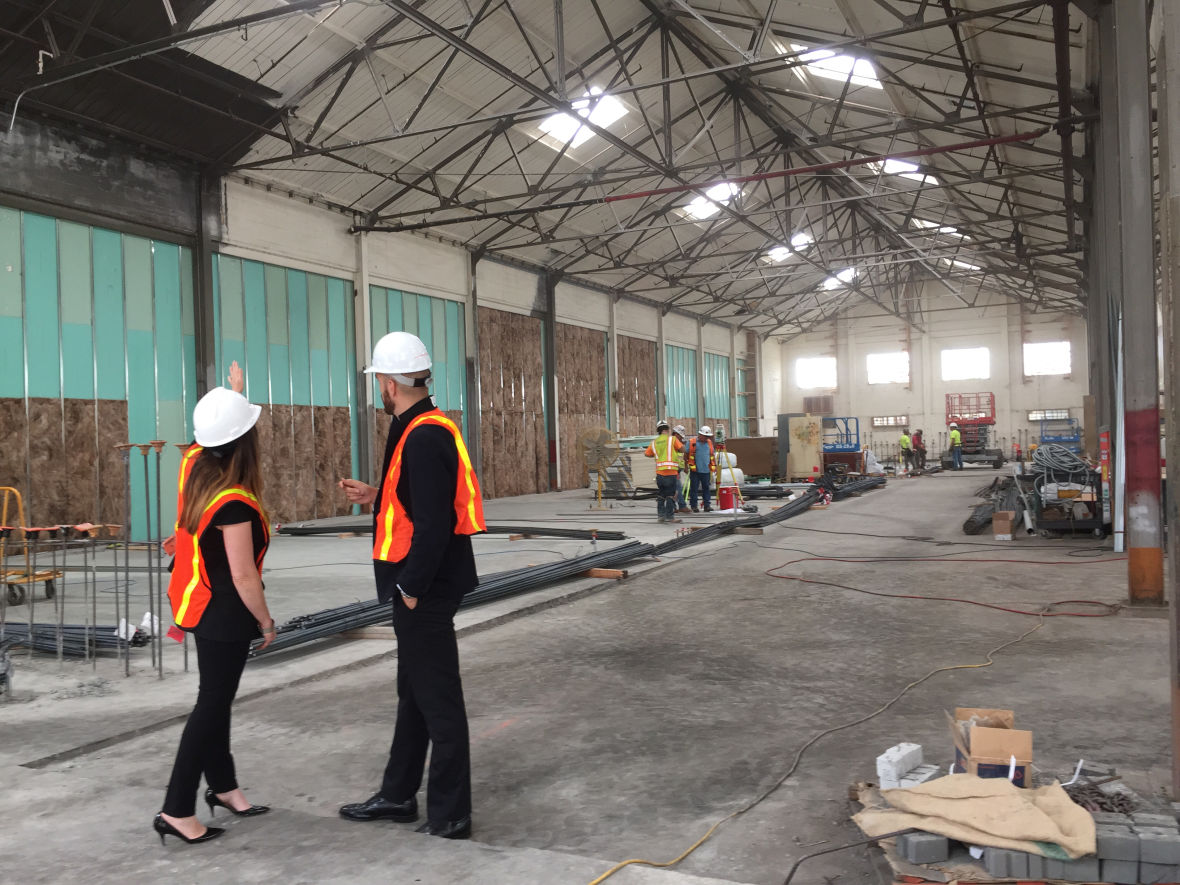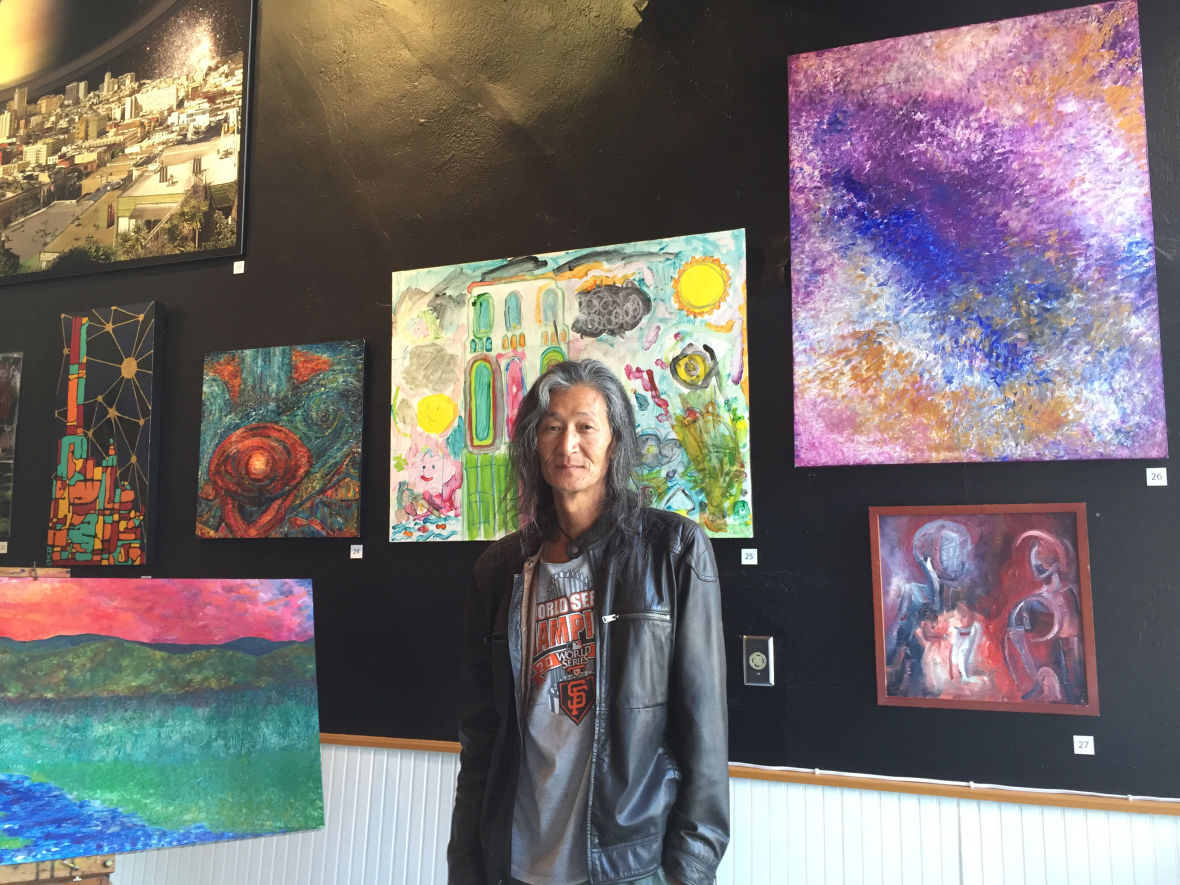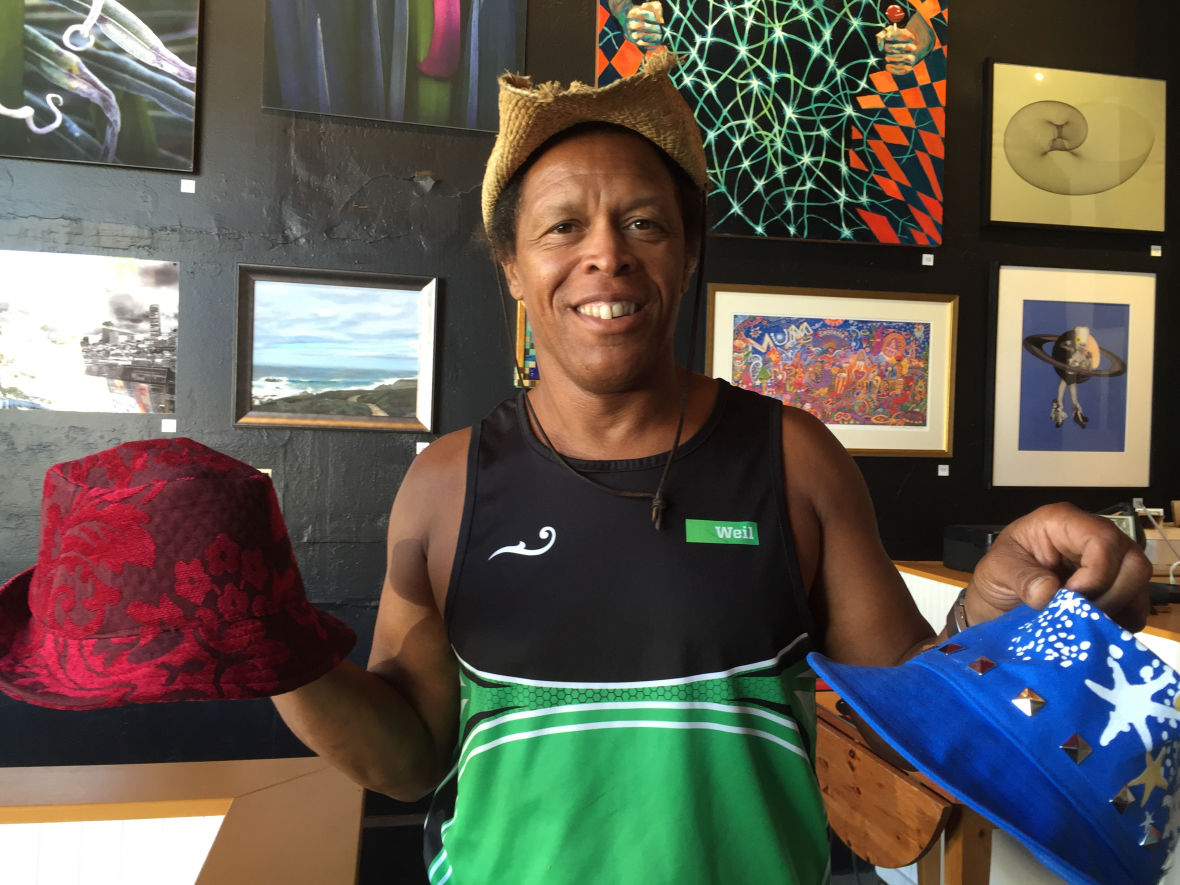Union Square was once the heart of San Francisco’s gallery district, but not so much anymore.
About 20 months ago, some of the city’s best known galleries were evicted to make room for a tech company, or gave up their leases because they couldn’t afford the soaring rents. Rena Bransten was among them. She ran her gallery at 77 Geary Street for nearly 30 years.
“In the old days,” Bransten said recently, “it was much more congenial. People wanted to come to the art galleries and schmooze and talk and go to openings, and that’s not really true anymore.”
When I talked to Bransten the other day, she was sitting in her storefront on Market St. near Civic Center, in a temporary space too small to mount a full show.
High rents have spun San Francisco galleries further and further from downtown, and to once unlikely neighborhoods: Jessica Silverman in the Tenderloin, Wendi Norris south of Market Street, and Catherine Clark, Jack Fischer, Brian Gross and George Lawson all in Potrero Flats near the Design District.
One of Bransten’s old neighbors at 77 Geary St., George Krevsky, took a more radical approach, and moved his business to his home in the Oakland Hills.
“The idea is a work in progress,” said Krevsky.
“Here are two Milton Avery drawings,” he said while standing in the doorway to a guest bedroom during a tour, which continued through the living room and into his office, where its walls were covered with paintings consigned for sale by Lawrence Ferlinghetti and Jack Levine, and prints by Ben Shahn.
Occasionally Krevsky shows a buyer through the house, but he says most of his sales now are at art fairs or to clients whose experience of the work is an image delivered over the internet.
“It’s in there,” Krevsky said pointing to his computer. “And that’s cold. I miss the warmth of the artist being there, and the client coming in and seeing the reaction between the human being and the painting. But I think brick-and-mortar galleries are a thing of the past.”
What’s at stake for the Bay Area art scene may not be obvious, with museums thriving around the bay, and the San Francisco Museum of Modern Art reopening in the spring.
But Renny Pritikin, now chief curator at the Contemporary Jewish Museum, says galleries are essential to the Bay Area’s arts ecosystem, “Art fairs are elitist,” he said. “But anyone can come into a commercial gallery and meet the curator and the artist for free. I don’t know many fields where that’s the case. And it would be a loss if this went away.”
But maybe the old gallery model can still thrive in the right location at the right price.
That’s what Deborah Rappaport and Andrew, her venture capitalist husband, are hoping. They’re converting a huge warehouse, once the home of a cabinet maker, into a space for 10 galleries on Minnesota St. in San Francisco’s Dogpatch neighborhood.

“Galleries need a physical presence,” Rappaport told me on a recent tour, “whether that’s where most of their sales come from or not. It’s the way they build careers for their artists, it’s the way they build inventory for the art fairs that they have to go to.”
The Rappaports are longtime arts patrons who watched with dismay as gallery after gallery lost its lease. So they came up with a business plan for this new space set to open this spring.
“We’re doing a for profit model, where we just want to break even,” said Rappaport.
Yet Rappaport says they can still offer affordable rents, a quarter to a third of what galleries are now paying around Union Square. Plus the Rappaport’s are offering free utilities, providing a room in which to show videoes, packing and shipping facilities, a café and a bar, and even showers.
“Nobody is happier about having showers on site than a gallerist,” Rappaport said laughing. “Because they can hang their shows until 15 minutes before the public shows up, and they don’t have to go home to change.”
The Minnesota Street Project, as it’s called, has attracted younger gallery owners like Chris Grunder.
“If this didn’t exist,” he said recently, while sidestepping construction workers and a forklift piled high with steel beams, “we probably would not have continued as a gallery.”
Grunder’s gallery, Bass and Reiner, is losing its Mission District space to — no surprise — a tech company.
Grunder’s and his future neighbors hope Minnesota St. will become a community, a destination for art lovers and artists to gather, drink and schmooze.
“I’m really looking forward to that,” said Trish Bransten, Rena Bransten’s daughter and gallery director.
Yup. The Branstens are moving their gallery to Rappaport’s Minnesota Street Project.
“The parallel to Union Square,” Trish Bransten said, “is that the people who come from out of town, will have a place to go.”
So score one for the city’s art galleries. But how do you save artists’ studios, which are falling in numbers due to rents increasing at a rapid pace?
Deborah Rappaport and her husband are also working on that, with plans to convert another 20,000-square-foot warehouse on Minnesota St. into art studios.
Another obliging landlord turned down higher offers to make room for North Beach Bauhaus, a five-artist studio and gallery collective in North Beach, one of the city’s highest rent neighborhoods.
“Our plan is to make rent the first year,” said photographer and collective member James Cha, “break even the second year, and be profitable the third year.”

Cha said he and his fellow artists consider themselves very lucky. They had a gallery on Green St. but lost the lease when the landlord raised the rent.

Cha shares the space with Earl Thibodeau, who makes colorful hipster hats in the large basement studio they all share. Thibodeau offers this reminder of why it’s worth saving space for local artists to make and show their work.
“We have all the stores that are selling mass produced stuff,” Thibodeau said. “Artists add the humanistic approach to life. You sort of inspire people. Make people dream.”